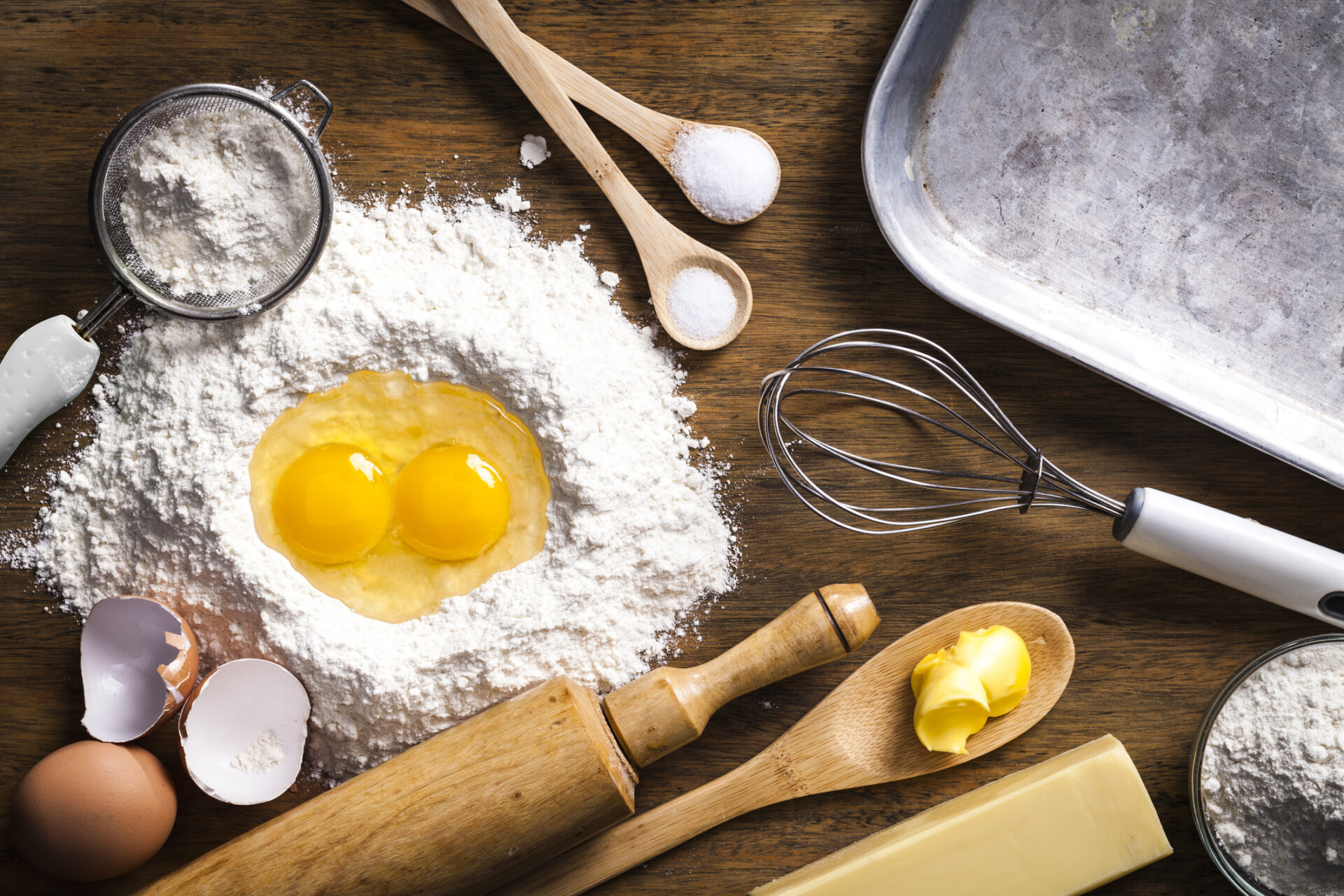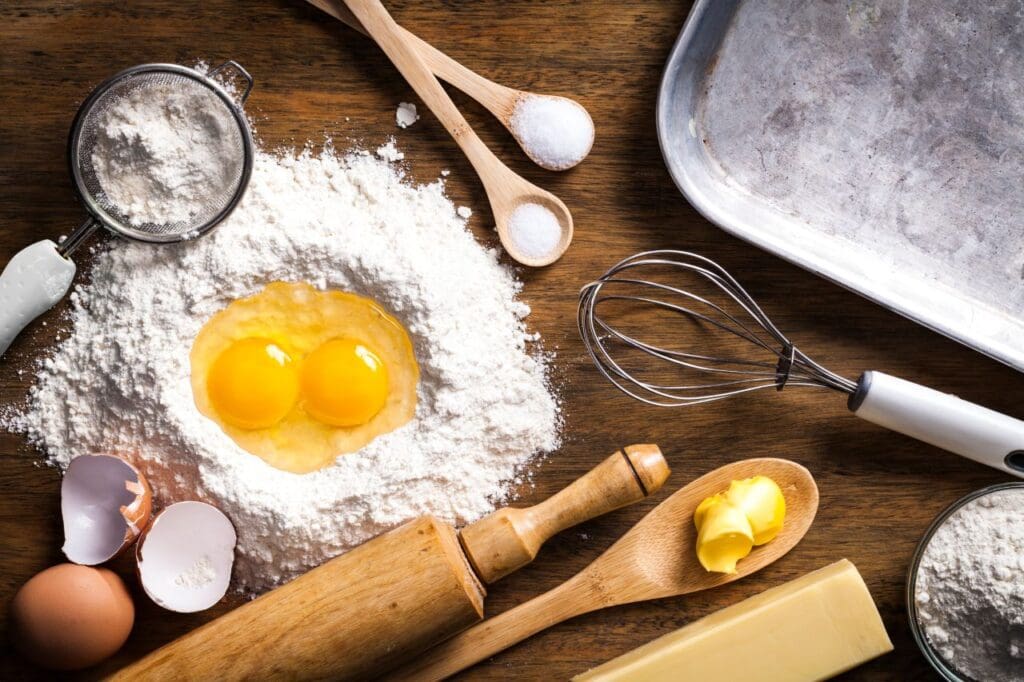
We’ve all heard that baking is a science, as much as it is an art. You can’t just throw ingredients into the bowl and expect everything to turn out well. There are actions and reactions involved and if you miss a step or leave out an ingredient the end-product might not resemble the one you wanted. Your cookies might not caramelise, your cake might not rise and your dough might not bind.
Have you ever wondered why this happens? In this article, we’ll take a closer look at what is going on at a molecular level, what chemical reactions are at work and how it all fits together to help you to create fantastic baked goods.

First things first: the dough. Very basic dough has two main ingredients—flour and water. There are a range of different kinds of flour and it’s important to select the right type of flour for your recipe. Low-protein flour, for example, is suited to biscuits, cakes and pie crusts, whereas high protein, hard-wheat flour is used to bake breads, bread rolls, or products that need a more elastic dough.
At the heart of all types of flour are two proteins: glutenin and gliadin. When water is added to flour to make dough, these proteins bond with each other to form a protein called gluten. Kneading the dough strengthens these gluten bonds.
For breads and products where flour must be kneaded, it is possible to either under-knead or over-knead your dough, so be sure to keep checking on the look and feel of your dough throughout the kneading process. The dough should be able to hold its shape, but it should not be allowed to get so stiff that it becomes difficult to manipulate.
The next step is usually to add a source of fat, usually in the form of an emulsion such as butter. An emulsion is a mixture of ingredients that don’t usually combine well. In the case of butter, these ingredients are water, fat and dairy solids. At 33°C, butter starts to melt, and the three components begin to separate. The melted fat flows outwards causing the biscuits to spread. This is why recipes recommend leaving ample space between your dollops of biscuit dough. At 100°C, the water boils and turns to steam causing the dough to rise and expand as the steam tries to escape.
One of the main proteins used in baking is the humble egg. Eggs can be used whole or split into their components: the yolk and the white (albumen). Raw eggs are mostly made up of individual coiled bundles of proteins. Once these proteins are heated, the coils unfurl and intertwine to form a big mass of proteins. The egg develops a denser constituency that gives substance to your biscuit dough. In addition to this, any bacteria that may have been present in the eggs are killed off once the temperature reaches 60°C.
Leavening agents such as baking powder are the ingredients that will make your cakes, cookies, biscuits and other baked goods rise. The chemical reactions involved create bubbles of gas that become trapped in the dough making it lighter and fluffier. There are various leavening agents to choose from depending on what you’re baking. For example, yeast is commonly used to extend the fermentation process when baking bread, whereas bicarbonate of soda, also known as baking soda or bicarb, is used when baking biscuits. Bicarb is a base that reacts with the acids (usually from the dairy) in your baking mixture and forms carbon dioxide bubbles that create a lighter biscuit.

At 140°C, your biscuits will begin to brown. This is due to the Maillard reaction which occurs when proteins and sugars break down at high temperatures. This not only changes the appearance of your biscuits, but also changes the flavour and texture. At this point, the biscuits release their characteristic delicious ‘baking-biscuits’ aroma.
The final step in creating absolutely delicious biscuits is caramelisation. During this process, your biscuits will brown further and their sweetness will increase. Caramelisation occurs when the high temperature of the oven causes the maltose carbohydrate molecules (sugar) to break down. Throughout caramelisation, diacetyl esters and lactones, furans and maltol are released. These compounds combine to create a nutty, caramel with a rich rum flavour.
If you continue to let your biscuit caramelise, the original sugar will begin to get used up, and the flavour will turn from sweet to bitter. If this continues, the biscuit will burn.
Obviously, not all chemicals combine to form edible treats, such as delicious biscuits. Some chemicals are very dangerous and should certainly not be eaten. To avoid misidentification, accidental ingestion and mishandling, chemicals should be correctly labelled, tracked and stored.
If you need assistance with chemical and hazard materials handling, SDS or labels for large quantities of chemicals, call Chemwatch on (03) 9573 3100.
Sources: